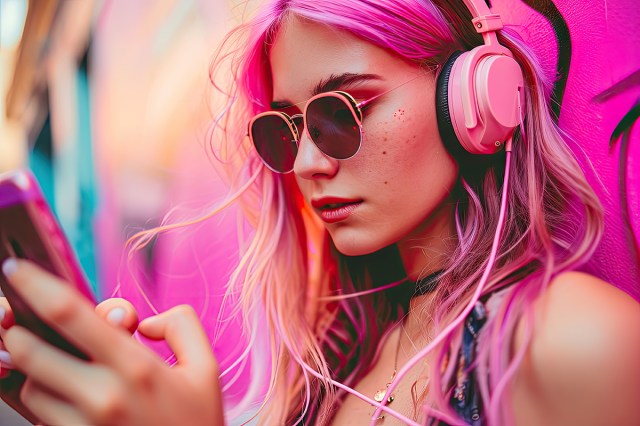
We’ve established that virtual influencers are officially a thing (ICYMI: Jennifer Wolfe’s excellent two-part explainer; read part one here). But what exactly are they good for?
A recent study from The Influencer Marketing Factory indicates that, when deployed effectively, virtual influencers are yet another tool for reaching audiences online, with applications for both brands and creators.
In case you’re wondering: “In addition to confirming their familiarity with this concept of influencers, 53% of our respondents confirmed following at least one virtual influencer,” the study affirms.
The agency suggests: “As a brand, collaborating with or creating your own virtual influencer could be cost-effective in the long run.
“As a creator, for someone who prefers to take a back seat or maybe doesn’t always want to be on camera, creating a virtual persona could be the answer.”

Advertisers may also benefit from increased brand safety and greater control over the talent, particularly if developed in-house.
Creators might be able to extend their online presence through an extra virtual influencer or two, theoretically increasing their monetization opportunities.

OK… But Does it Work?
It might seem counterintuitive, but these digital personas are actually perceived as authentic by many survey respondents, provided creators are upfront about their synthetic origins. Video intros or a line in their bio were preferred by most respondents.
Note that only a subset of respondents (15%) told The Influencer Marketing Factory that they rated “their trust of products advertised by virtual influencers a 7 out of 10.”
Additionally, 28% of respondents indicated a positive sentiment about brands leveraging virtual influencers, saying “it is a creative strategy that can push the boundaries of traditional advertising and engage younger audiences.”

And while nearly half said they’ve never purchased a product based on a virtual influencer’s endorsement, more than a quarter indicated it’s a future possibility, and 29.5% had already made a purchase based on their recommendation. Definitely room for growth on all fronts.
“Virtual influencers aren’t going away, and at the same time, they are not going to replace the need for human connection, building community, and trust. Sure, it may shift the dynamics of how we leverage influencer marketing in the future, but we see this as more opportunity for both brands and creators,” the study concludes.
Business Insider’s Amanda Perrelli points out: “Even though a significant number of participants answered that they followed or were aware of virtual influencers, others chose not to follow them.
“The No. 1 reason participants hadn’t followed an AI influencer included a lack of interest in their content. Other respondents said they preferred real relationships and expressed skepticism about a virtual influencer.”
Unsurprisingly, virtual influencers are not necessarily for everyone nor every industry.

Where to Start
Because “virtual influencers embody the advancement of technology,” there’s a natural fit between them and the tech vertical, according to The Influencer Marketing Factory study. Respondents concurred: “33.5 % of our respondents said virtual influencers would be most effective at promoting technology and gadget products.”
However, even more respondents (36%) said that they thought these personas would be right for marketing gaming products. And it makes sense that digital avatars would be perceived as authentically promoting other digital offerings. In fact, The Clueless’ Aitana Lopez (@fit_aitana) is an example of a “gamer girl” virtual influencer deployed with success.
Luxury brands seem keen to experiment with virtual influencers, so it’s good news that consumers also indicated beauty/cosmetics (32.7%), fashion (28%) and entertainment (21.5%) would likely be verticals ripe for virtual influence.
How to Do It Right
Whether you’re selecting from a set of existing virtual influencers or designing one from the first byte, the same elements are applicable as with human influencers.
According to Impact.com Product Marketing Manager Blaire McClure, there’s a set of questions you should always ask before embarking on a new campaign. Namely:
- Audience or niche
- Content relevance and quality
- Engagement
- Location/geographic relevance
- Channel/platform applicability
- Authenticity
Additionally, The Influencer Marketing Factory cautions: Before embarking on a virtual influencer journey, “[b]rands need to ensure they have clear processes in place that also ensure compliance with various legislative bodies and establish transparency with their online communities.”
Read the full report online here.
• Recognizing ROI in Influencer Marketing: AI and Virtual Influencers
• Leveraging AI for Influencer Marketing

Why subscribe to The Angle?
Exclusive Insights: Get editorial roundups of the cutting-edge content that matters most.
Behind-the-Scenes Access: Peek behind the curtain with in-depth Q&As featuring industry experts and thought leaders.
Unparalleled Access: NAB Amplify is your digital hub for technology, trends, and insights unavailable anywhere else.
Join a community of professionals who are as passionate about the future of film, television, and digital storytelling as you are. Subscribe to The Angle today!


